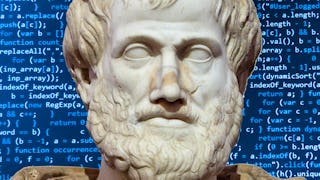This is the first out of three courses exploring Internet Policy: Principles and Problems. This course builds an interdisciplinary policy framework to critique and develop regulatory and policy approaches to real-world problems on the Internet. Learners then use the framework to develop policy solutions to improve the Digital Divide and to evaluate net neutrality regulations.


您将学到什么
Internet Policy Knowledge: Identify core problems and policies impacting the Broadband Digital Divide and Net Neutrality.
Analytical Skills: Build frameworks to critically evaluate and develop policy positions on the Digital Divide and Net Neutrality.
Communications Skills: Write and articulate clear, well-reasoned positions on current policy issues and debates.
您将获得的技能
要了解的详细信息

添加到您的领英档案
15 项作业
了解顶级公司的员工如何掌握热门技能

该课程共有4个模块
In this module, you will learn how the early Internet was viewed not only as a disruptive force to communications services but to government regulation of information services as well, raising the important question of what justifications should be provided in support of policies designed to regulate Internet services. In short, we consider the important question of whether and in what fashion we should regulate the Internet. While this may seem strange to you given the large amount of government regulation of Internet services in today’s world, as you will see, the roots of the Internet began with a declaration in opposition to any government regulation of the Internet networks and services!
涵盖的内容
9个视频18篇阅读材料4个作业3个讨论话题
In this module, you will learn how policy makers within the United States, since 2010, have been advancing broadband Internet access service to become a universal service to all residential locations. We will discover how National Broadband Plans are pivotal policy planning tools to identify and address the main policy issues driving this universal service designation. This is perhaps the most significant communications policy development that has occurred in the last 100 years since telephone service was declared a universal service in the early 1900s! You will learn how far the transition to universal broadband service has progressed, and what have been the key drivers of progress, along with the remaining barriers facing this transition set in motion by the recognition of the Internet as critical infrastructure for the nation.
涵盖的内容
13个视频11篇阅读材料4个作业1个讨论话题
So far in this course we have studied the problems identified as “Digital Divide issues” that have become increasingly apparent since before the National Broadband Plan was completed in 2010. We now turn to gain further understanding of the digital divide, as reflected in the definition of the term by the Organisation for Economic Co-operation and Development (OECD) as “the gap between individuals, households, businesses and geographic areas at different socio-economic levels with regard both to their opportunities to access information and communication technologies (ICTs) and to their use of the Internet for a wide variety of activities.” As you will learn in this learning module, the gaps included in this definition, known as digital equity gaps, arise due to wide disparities in the broadband usage and adoption patterns of different groups of people in the United States. To study how public policy can address digital equity gaps, we will focus on the broadband equity initiatives and activities included in the Infrastructure Investment Jobs Act (IIJA) of 2021. Specifically, we will learn how the Digital Equity Act of 2021, one of the major policy components included in the IIJA, plans to address Digital Equity gaps. We will then use the Colorado's Broadband Roadmap and Digital Access Plan as a case study to assess the approaches taken in Colorado to address both Digital Divide deployment issues as well as digital equity gaps. To assess the approaches taken in this case study, we will apply portions of the interdisciplinary policy framework to help us critique these plans and programs now underway in the state of Colorado.
涵盖的内容
5个视频10篇阅读材料2个作业1个讨论话题
Our earlier modules have focused upon access to broadband infrastructure based upon the actual availability of broadband services throughout the geographic areas or communities where consumers reside and the affordability of broadband services to consumers to deliver the benefits of broadband necessary in modern society. In this module we turn to examine another type of access to broadband services which is the ability of consumers to access the online resources provided by broadband services. The quality and performance of network access for Internet users are addressed in the often-controversial net neutrality regulations intended to manage fair and efficient access to online Internet resources such as Internet applications and websites. In this module, you will learn about the evolution of network neutrality regulations established by the Federal Communications Commission. As you will see, these regulations are among the most controversial that have been applied to Internet services due to philosophical differences in how the Internet should be regulated by the government.
涵盖的内容
8个视频11篇阅读材料5个作业
攻读学位
课程 是 University of Colorado Boulder提供的以下学位课程的一部分。如果您被录取并注册,您已完成的课程可计入您的学位学习,您的学习进度也可随之转移。
位教师

从 Computer Security and Networks 浏览更多内容
 状态:免费试用
状态:免费试用University of Colorado Boulder
 状态:预览
状态:预览University of Michigan
 状态:免费试用
状态:免费试用University of Colorado Boulder
 状态:免费试用
状态:免费试用University of Colorado Boulder
人们为什么选择 Coursera 来帮助自己实现职业发展




常见问题
A cross-listed course is offered under two or more CU Boulder degree programs on Coursera. For example, Dynamic Programming, Greedy Algorithms is offered as both CSCA 5414 for the MS-CS and DTSA 5503 for the MS-DS.
· You may not earn credit for more than one version of a cross-listed course.
· You can identify cross-listed courses by checking your program’s student handbook.
· Your transcript will be affected. Cross-listed courses are considered equivalent when evaluating graduation requirements. However, we encourage you to take your program's versions of cross-listed courses (when available) to ensure your CU transcript reflects the substantial amount of coursework you are completing directly in your home department. Any courses you complete from another program will appear on your CU transcript with that program’s course prefix (e.g., DTSA vs. CSCA).
· Programs may have different minimum grade requirements for admission and graduation. For example, the MS-DS requires a C or better on all courses for graduation (and a 3.0 pathway GPA for admission), whereas the MS-CS requires a B or better on all breadth courses and a C or better on all elective courses for graduation (and a B or better on each pathway course for admission). All programs require students to maintain a 3.0 cumulative GPA for admission and graduation.
Yes. Cross-listed courses are considered equivalent when evaluating graduation requirements. You can identify cross-listed courses by checking your program’s student handbook.
You may upgrade and pay tuition during any open enrollment period to earn graduate-level CU Boulder credit for << this course/ courses in this specialization>>. Because << this course is / these courses are >> cross listed in both the MS in Computer Science and the MS in Data Science programs, you will need to determine which program you would like to earn the credit from before you upgrade.
MS in Data Science (MS-DS) Credit: To upgrade to the for-credit data science (DTSA) version of << this course / these courses >>, use the MS-DS enrollment form. See How It Works.
MS in Computer Science (MS-CS) Credit: To upgrade to the for-credit computer science (CSCA) version of << this course / these courses >>, use the MS-CS enrollment form. See How It Works.
If you are unsure of which program is the best fit for you, review the MS-CS and MS-DS program websites, and then contact [email protected] or [email protected] if you still have questions.
更多问题
提供助学金,



